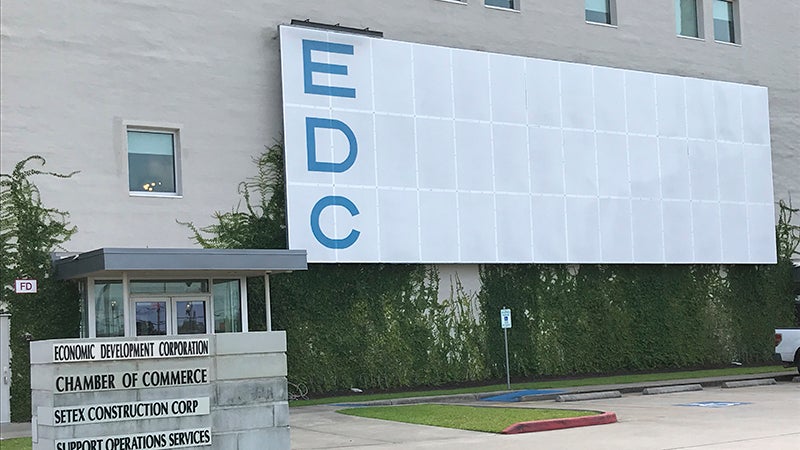FLOYD BATISTE — We must bridge PA’s skilled workforce gap through on-the-job training
Published 12:18 am Wednesday, June 10, 2020
|
Getting your Trinity Audio player ready...
|
Port Arthur can solve its skilled worker shortage with on-the-job training (OJT) programs targeting students, underemployed adults, as well as folks considering a career transition.
It takes almost seven years for one to achieve an annual salary that equals one total student loan debt. However, by that time the interest has driven that student loan debt up, even in the face of a moderately aggressive repayment plan.
The average wage for a recent college graduate in 2019 was approximately $38K yearly, but they are miserably meandering through their career like a moonstruck sheep. Here in Port Arthur, there is a huge need for good industrial construction workers.
On average, industrial construction workers make $60K-$100K per year, and plant operators make $90K-$120K per year. As a result of hiring industrial construction workers, students, unemployed and underemployed adults need to have a thorough understanding of the job functions for these roles.
If you realized that you have skill sets that translate really well to industrial construction work, you could be making substantially more money within a year or two by choosing an employer that offered an on-the-job training program. You’ll enjoy doing something you are passionate about with long-term potential, as well as reskilling your craft.
Verifiable work experience tends to be the primary requirement for a construction worker role. A college degree can be substituted for work experience to fast track into an entry-level management construction worker role. However, on average the pay for these roles’ ranges from $40K-$60K yearly.
“Earn while you learn” is the motto for the future. Deciding to pursue a career as a construction worker through on-the-job training has changed the trajectory of many individuals’ careers.
It serves as a prime example of the necessity for on-the-job training programs as a means to replenish our rapidly depleting skilled labor workforce and rebuild the foundation of our economy. It has long been established that apprenticeships fill employers’ skilled labor needs while reducing unemployment.
OJT opportunities in nature provide a debt-free career path for our Generation Z, and entire workforce at-large to enjoy a family-sustaining career.
Companies bare the initial costs of apprenticeship programs, but the data proves that companies who use apprenticeship programs experience higher productivity and employee retention rates. The current skills gap puts Port Arthur workers and businesses in a vulnerable economic position, negatively affecting the city’s position as a global economic leader.
Manufacturing resurgence is helping our City reestablish its economic power throughout the world. Building the Workforce of the Future, apprentice programs and businesses that promote or provide services for this massive on-the-job-training initiative can be helped by receiving substantial government funds.
Six years from now, today’s 12-year-olds will be 18 and poised to enter the workforce. Think about how skilled and productive they would be on their first day in the full-time workforce if they received two years of vocational education and on-the-job training while in high school.
Then as an incentive for successfully completing the high school apprenticeship program, they’d receive a monetary award, a full-time job with benefits and a signing bonus.
The same applies to community college students, who have an advantage as most of the schools already offer vocational education programs. Today, 12- to 17-year-olds account for roughly 25 percent of our population.
Think about the impact on our workforce if we could even get just one-third of them into a two-year skilled trade apprenticeship program while in high school, then directly into the workforce. It would certainly help to close the skills gap by increasing workforce engagement among 16- to 24-year-olds far beyond the 2026 projections of 11.7 percent.
Aggressively targeting the youth to replenish the aging skilled workforce is a good start. But luring folks into a new career path and targeting historically underrepresented groups to join the skilled workforce will lead to a more effective 360 strategy. By 2026, 63 percent of the American workforce will be comprised of 25- to 54-year-olds, all of which are currently in the workforce today.
Filling the Job Skills Gap in Port Arthur is the key to not only bridging the skills gap but reinvigorating Port Arthur Workforce by implementing user-friendly, incentive-based apprenticeship programs. These programs should aggressively target high school and community college students, as well as workers seeking a new career for paid on-the-job training opportunities.
Development of skills that will lead to immediate employment becoming the foundation for sustainably lucrative careers is a key community priority. The challenge will be getting both companies and workers alike to fully embrace this blue-collar revival.
Floyd Batiste is CEO of the Port Arthur Economic Development Corporation. He can be reached at fbatiste@paedc.org.







